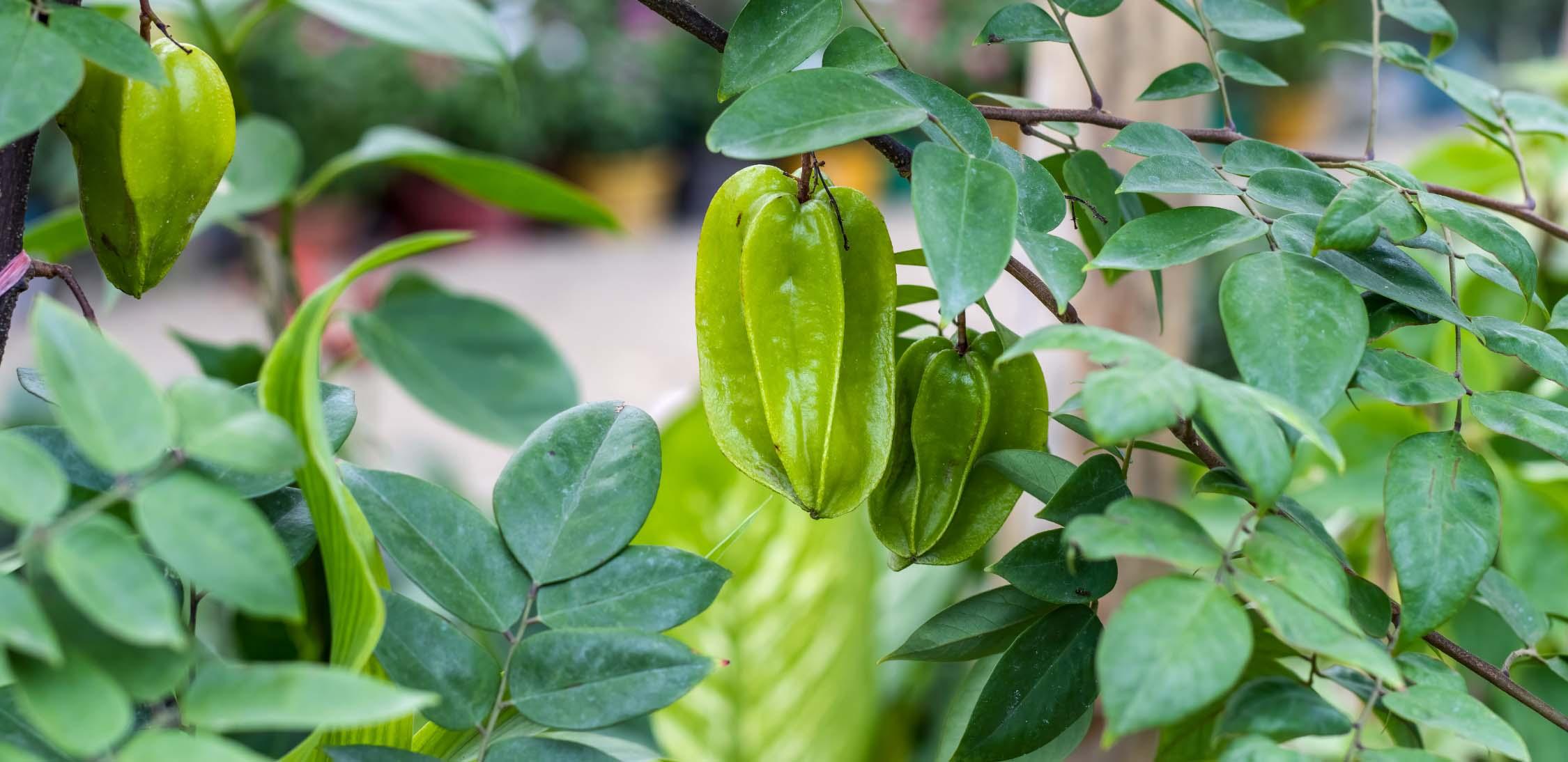
Starfruit / Carambola
Scientific Name: Averrhoa carambola
Origin: Asia
Botanical Family: Oxalidaceae
The star fruit tree (Averrhoa carambola) is a tropical, evergreen plant cultivated for its sweet and sour fruits, with diverse culinary and medicinal uses.
Brief History and Description
Star fruit trees (Averrhoa carambola) are attractive, with curved branches and large masses of purple blossoms that attract pollinators. They are widely cultivated throughout tropical countries for their fruits. Mature fruits of A. carambola are about 5 to 7 inches long and turn from light olive green to warm bright yellow when fully ripe. Carambola is considered native to Malesia. However, it has also been guessed to be a tropical American species introduced to Asia by the Spanish galleons. The plant is widely cultivated in both the Old World and New World tropics.
Culinary Usage and Nutritional Properties
Star fruit is a hypolipidemic fruit with low carbohydrates, calories, and sugar. A medium-sized star fruit provides about six grams of carbohydrates and around 3.62 grams of sugar.
Star fruit is rich in fiber and pectin. It contains many vitamins and minerals, including natural antioxidants such as gallic acid and vitamin C, which help prevent cellular damage. Star fruit also contains:
Potassium, phosphorus, magnesium, calcium, iron, and sodium
Carambola can be eaten raw or pickled. Ripened carambola is “sweet and sour” and is used to prepare juices. Star fruits are commercially utilized in the preparation of concentrated juices, soft drinks, and fruit jams.
Economic and Environmental aspects
One of the industrial uses of The Carambola is its essential oil. Averrhoa fruits are used for cleaning utensils and are very effective in removing iron rust from metals. Carambola can also be used in cooking or consumed as a vegetable in different culinary products. Carambola is an evergreen tree that can benefit the people of the area because of the variety of its culinary uses and environmental benefits.
Annual Yield
The Carambola normally produces about 300 fruits per tree at the age of 2 years. Production will increase from year to year until 9 years and above, when the production stabilizes (about 1200 fruits per tree).
Pharmacological Activities and Bio-active Properties
Anti-inflammatory, anti-oxidant, and central and peripheral analgesic activities,
The ripe fruit pulp of the plant significantly decreases blood glucose levels,
Aqueous extract of its leaves displays dose-dependent, significant anthelmintic activity,
The isolated water-insoluble fiber has shown hypocholesterolemia and hypolipidemic activities,
Stem extracts exhibited antibacterial activity, especially against Staphylococcus aureus and Klebsiella sp,
Alcoholic extract from the stems of A. carambola has shown selective activity against brain tumor cells, while an extract from the leaves was effective against liver carcinoma cells.1
Green Your Inbox!
With our Newsletters, Stay updated on our Stories of Change and Growth.
As a gift, get a personalised Nature E-card from PH.


